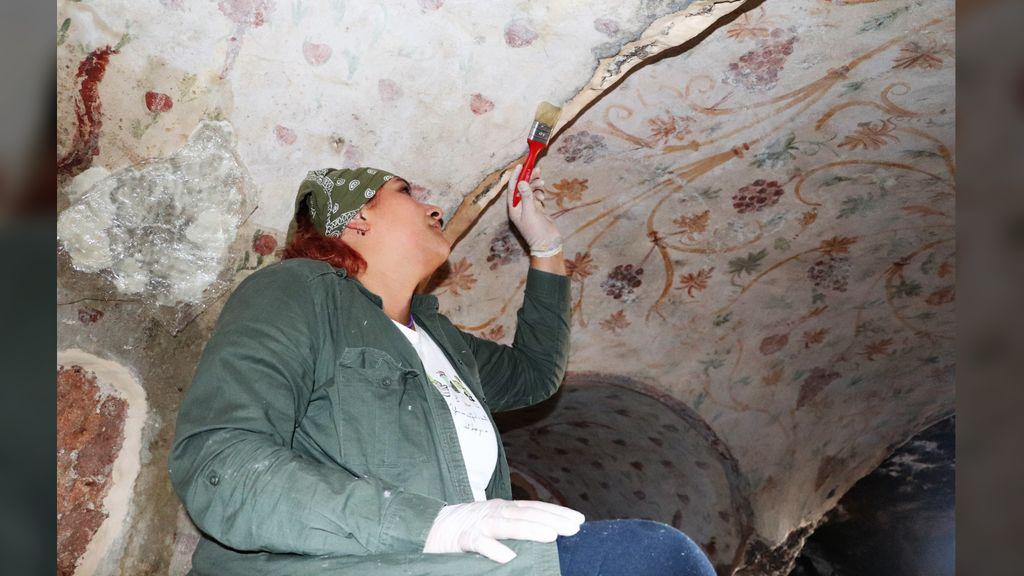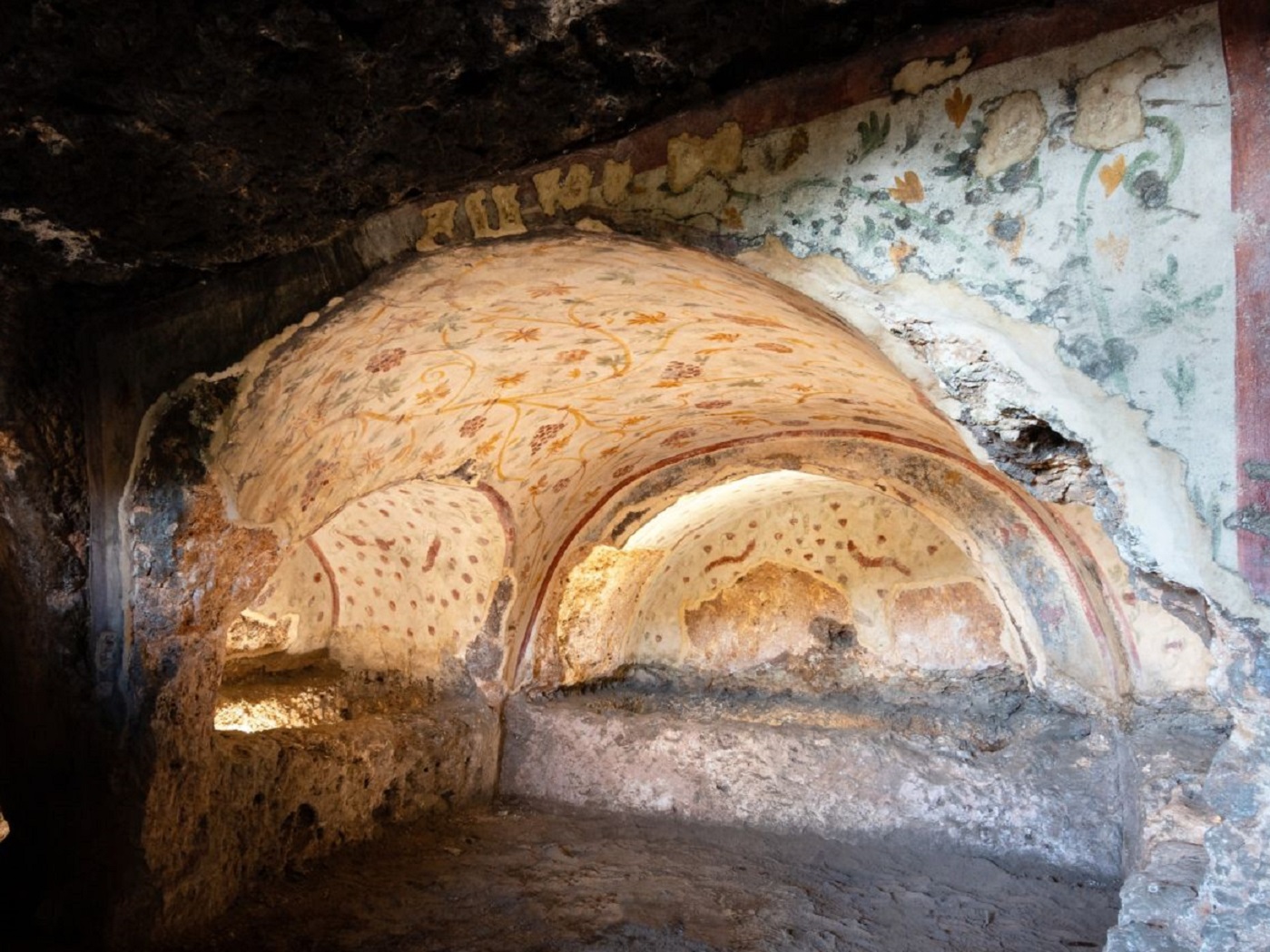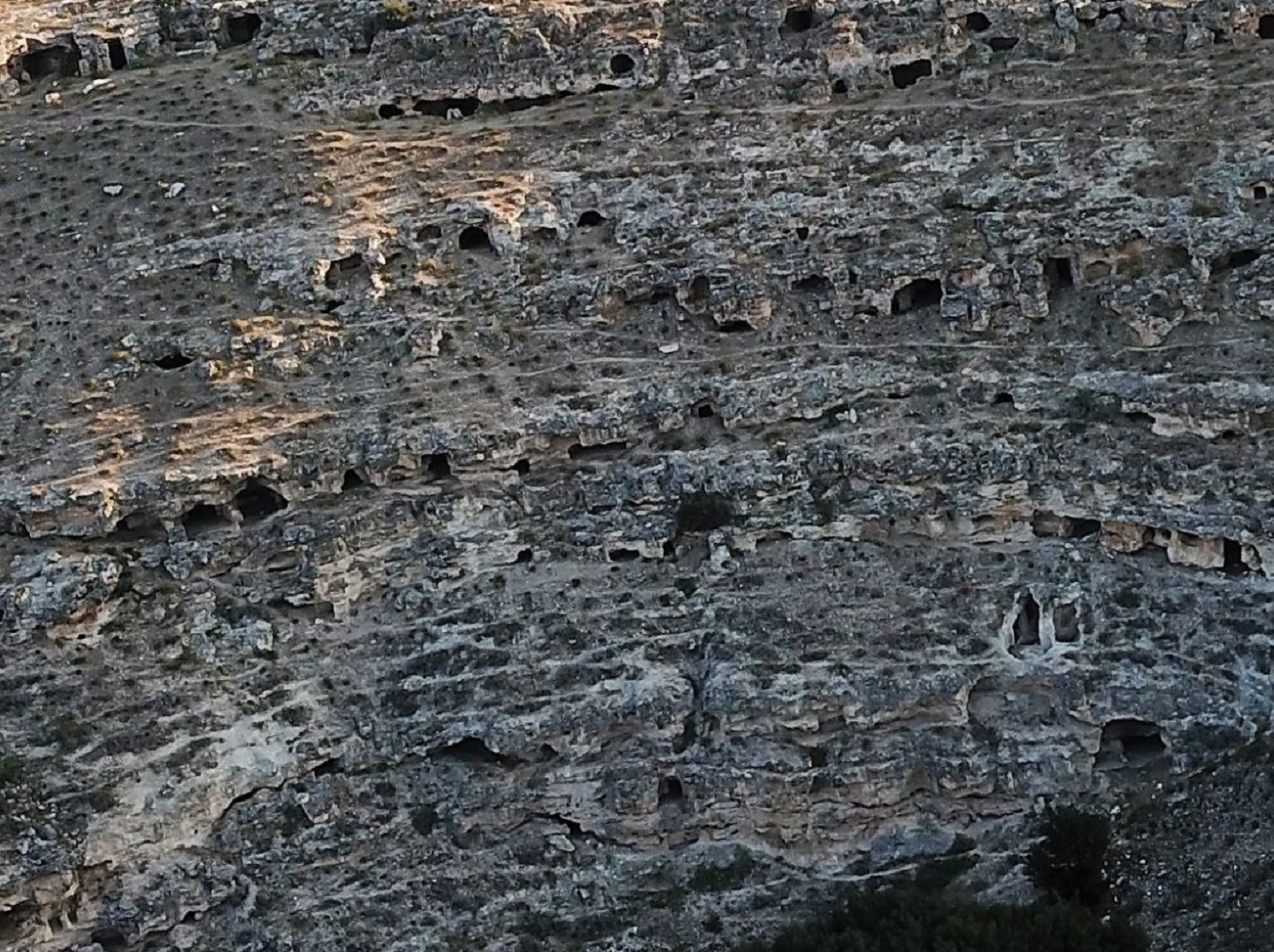Anthropology
Related: About this forum400 stone-cut chamber tombs, filled with wall paintings and treasures, discovered in Turkey
By Laura Geggel 1 day ago
The Roman-era tombs are in a canyon wall.

Restorative work reveals the designs painted on the stone-cut tombs' ceilings. (Image credit: Blaundos Archaeological Excavation Project Archive)
Archaeologists in Turkey have discovered 400 rock-cut chamber tombs that date to 1,800 years ago and make up part of one of the largest rock-cut chamber tomb necropolises in the world.
The team found the tombs in the ancient city of Blaundos (also spelled Blaundus), located about 110 miles (180 kilometers) east of the Aegean Sea in what is now Turkey. The city was founded during the time of Alexander the Great and existed through the Roman and Byzantine periods.
The tombs are filled with sarcophagi, many of which contain multiple deceased individuals — a clue that families used these tombs for burials over many generations, said Birol Can, an archaeologist at Uşak University in Turkey and head of the Blaundos Excavation Project.
"We think that the Blaundos rock-cut tomb chambers, in which there are many sarcophagi, were used as family tombs, and that the tombs were reopened for each deceased family member, and a burial ceremony was held and closed again," Can told Live Science in an email.
More:
https://www.livescience.com/rock-cut-chamber-tombs-turkey
~ ~ ~
Hundreds of Ornate, Rock-Cut Tombs Discovered in Ancient Turkish City
Some 1,800 years ago, residents of Blaundos buried their dead in highly decorated graves cut into the sides of a surrounding canyon
Livia Gershon
Daily Correspondent
October 15, 2021

The tombs feature images of vines, flowers and geometric patterns, as well as mythological figures. Blaundos Archaeological Excavation Project Archive
Excavations at Blaundos in Uşak, Turkey, have revealed 400 rock-cut tombs dated to 1,800 years ago, when the ancient city was under Roman control. Many of the tombs are decorated with images of vine branches, bunches of grapes, flowers, animals and mythological figures, the state-run Anadolu Agency (AA) reports.
Blaundos was located atop a hill and surrounded by a canyon that offered protection from attackers. The tombs were carved into the steep sides of the canyon.
“There are arched sarcophagi carved into the bedrock in front of the walls of each room,” expedition leader Birol Can, an archaeologist at Uşak University, tells AA. “Apart from these, places that are thought to be used for funeral ceremonies were also found inside the rock tombs. The main door of the tombs was closed with a marble door and reopened during burial or ceremony times in the past.”

The city's ancient residents carved the tombs into the sides of a canyon. Blaundos Archaeological Excavation Project Archive
. . .
Archaeologists have been aware of the rock-cut necropolis—one of the largest burial sites of its kind in the world—for more than 150 years. But researchers only began systematically excavating Blaundos in 2018. Aside from the tombs, writes Argun Konuk for Daily Sabah, the team has identified temples, a theater, a public bath, aqueducts, a state building, a stadium and more.
More:
https://www.smithsonianmag.com/smart-news/turkish-archaeologists-excavate-rock-cut-tombs-in-ancient-city-180978877/
mitch96
(14,667 posts)niyad
(120,015 posts)SheltieLover
(59,623 posts)Ty for sharing! ![]()
Bayard
(24,145 posts)The designs look like modern day wallpaper.